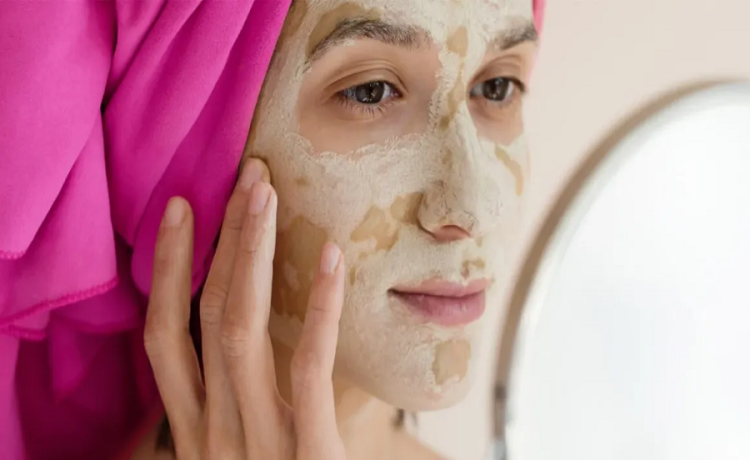Multani Mitti, or Fuller’s Earth, stands as a timeless treasure in the world of skincare. Its inherent natural properties make it an incredibly versatile and effective ingredient, catering to various skin types and offering an array of benefits, from deep cleansing to revitalization.
I. Introduction to Multani Mitti
1. What are the Multani Mitti benefits?
Originating from Multan, Pakistan, Multani Mitti is a clay renowned for its rich mineral composition. It contains magnesium chloride, quartz, and calcium carbonate, among other minerals, making it a powerhouse for skincare.
2. Benefits for Skin
Its benefits encompass:
Absorption of Excess Oil:
Ideal for combating oily skin.
Deep Cleansing:
Clears out impurities, unclogs pores, and removes dead skin cells.
Improvement in Skin Texture:
Regular use promotes smoother and softer skin.
Acne and Blemish Reduction:
Effective in reducing acne and minimizing blemishes.
II. Understanding Different Skin Types
Understanding one’s skin type forms the cornerstone of effective skincare. Here’s an overview:
1. Oily Skin
characterized by excess sebum production, oily skin often appears shiny and is prone to acne and enlarged pores. Embracing multani mitti benefits can help mitigate these concerns, as it’s known for its natural ability to absorb excess oil, unclog pores, and balance skin’s sebum production, making it a popular choice in skincare routines tailored for oily skin types.
2. Dry Skin
Lacks sufficient moisture, leading to flakiness, roughness, and occasional itching.
3. Combination Skin
combination skin exhibits characteristics of both dry and oily skin, usually with an oily T-zone and drier cheeks. Incorporating multani mitti benefits can be advantageous for managing this skin type. Its unique properties help to address excess oil in the T-zone while simultaneously providing a gentle, natural treatment for the drier areas, making it a versatile option in skincare routines tailored for combination skin.
4. Sensitive Skin
Easily reactive to various products, sensitive skin can experience redness, irritation, or discomfort.
III. Multani Mitti Face Masks Recipes for Various Skin Types
A. Multani Mitti for Oily Skin
Tailored for oily skin, this mask proves beneficial:
Ingredients:
Multani Mitti, rose water, and neem powder.
Preparation:
Mix the ingredients into a paste.
Application:
Apply evenly, let it dry, and rinse.
Benefits:
Absorbs excess oil, tightens pores, and prevents acne breakouts.
B. Multani Mitti for Dry Skin
To hydrate and nourish dry skin:
Ingredients:
Multani Mitti, yogurt, and honey.
Preparation:
Create a hydrating paste.
Application:
Apply generously, leave for hydration, and rinse gently.
Benefits:
Moisturizes, softens, and nourishes parched skin.
C. Multani Mitti for Combination Skin
Balancing oily and dry areas:
Ingredients:
Multani Mitti, aloe vera gel, and turmeric.
Preparation:
Blend for a balanced mask.
Application:
Apply to the T-zone or drier areas.
Benefits:
Regulates oiliness while hydrating dry patches effectively.
D. Multani Mitti for Sensitive Skin
Gentle care for sensitive skin:
Ingredients:
Multani Mitti, cucumber juice, and oatmeal.
Preparation:
Mix for a soothing paste.
Application:
Apply gently, leave briefly, and rinse off.
Benefits:
Calms irritation, soothes, and refreshes sensitive skin.
IV. Tips for Using Multani Mitti Face Masks
A. Frequency of Use
Optimal usage lies within 1-2 times a week to avoid excessive drying of the skin.
B. Patch Test
Before full application, conduct a patch test to check for any adverse reactions.
C. Additional Ingredients
Experimenting with additional natural ingredients like lemon, rose water, or essential oils can amplify the benefits of the masks, especially when combined with multani mitti. This versatile clay has inherent multani mitti benefits that, when complemented by ingredients like lemon, rose water, or essential oils, enhance the effectiveness of skincare masks, offering a holistic approach to skincare routines.
Conclusion
Multani Mitti face masks offer a cost-effective and natural alternative to address various skin concerns. By incorporating a multani mitti guide, understanding your skin type, and selecting the appropriate ingredients, you can elevate your skincare routine to new levels of rejuvenation and health. This guide empowers you to make informed choices, customizing masks tailored to your skin’s specific needs for optimal results.
FAQs
1. Can Multani Mitti cause skin dryness?
Multani Mitti can be drying, hence it’s recommended to blend it with hydrating ingredients for dry skin.
2. Can Multani Mitti cause irritation for sensitive skin?
For sensitive skin, mixing Multani Mitti with soothing agents like aloe vera or cucumber juice is advisable to minimize the risk of irritation.
3. How often should I use a Multani Mitti face mask?
Using a Multani Mitti mask 1-2 times a week is generally suitable for most skin types.
4. Can Multani Mitti help with acne-prone skin?
Yes, Multani Mitti’s oil-absorbing properties can help manage excess oil and reduce acne breakouts.
5. Can Multani Mitti remove dark spots?
While not a direct remedy, consistent use of Multani Mitti can aid in improving skin texture, potentially reducing the appearance of dark spots over time.













